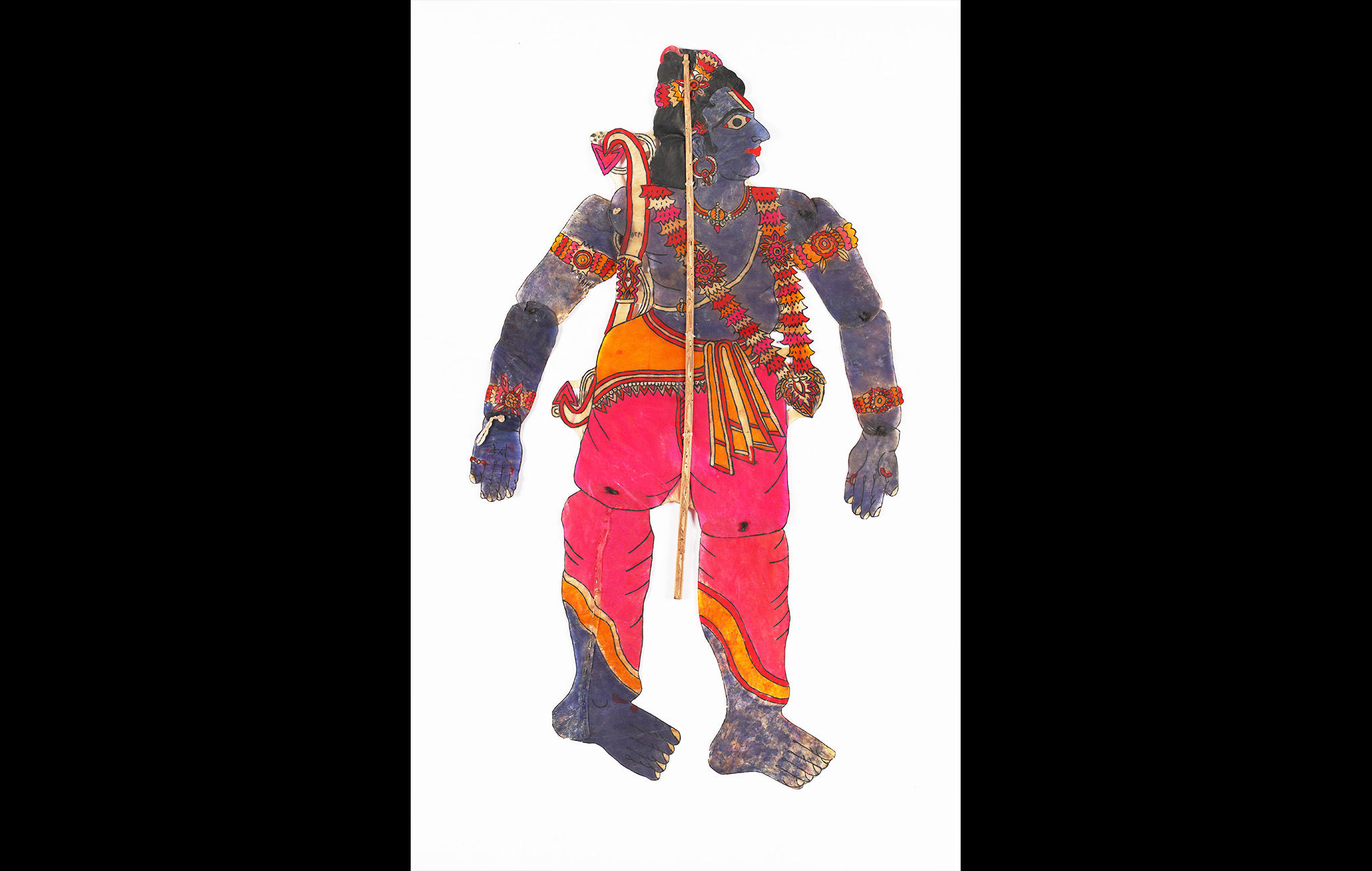
This shadow puppet of Rama is from Tholu Bommalaata, puppet tradition of Andhra Pradesh in India. Here, ‘tholu’ means leather, ‘bommalu,’ puppets; and ‘aata’ dance.
Valmiki, in his epic Ramayana, describes Rama, as an ideal personality and compares him with numerous gods and sages with many virtues. Rama is committed to Dharma even when exiled to the forest after being dethroned by his father’s second wife, Kaikeyi, due to her ambition to set her son, Bharat, on the throne. Rama sets out to save his wife Sita, after she is abducted in the forest by Ravana, the Asura king of Lanka. In this war, he is supported by Lakshmana, his brother and Hanuman, the monkey God. Rama wins the war against Ravana and establishes himself as the King of Ayodhya upon his return.
One of the versatile proponents of this Tholu Bommalaata is Sindhe Chithambara Rao. He is a National award-winning puppeteer who lives in the village of Dharmavaram in Andhra Pradesh. Chithambara Rao’s great-grandfather, Nayanappa Rao, was the first puppeteer in the family. He migrated from Solapur district in Maharashtra to Kolar district in Karnataka and developed his puppetry skills by building relationships with the local puppeteers. From the age of 8, Chithambara Rao trained under his father in the art of shadow puppetry, carefully observing his father, elder sister and brother synchronise the puppets with their storytelling melodies. Today, Chithambara Rao’s troupe Chaya Nataka Brundam has performed in cultural forums across India, Europe, South America, Egypt, and Oman.
To read more about Tholu Bommalaata, click here.
Title
RamaPeriod
late 20th century - early 21st centuryArtist
Sindhe Chithambara RaoStyle
Tholu BommalaataMedium
Vegetable and poster colour on animal hideDimensions
H: 94 cm x W: 34 cmAccession No.
2017.44.76Genre: Indigenous & Tribal Art
